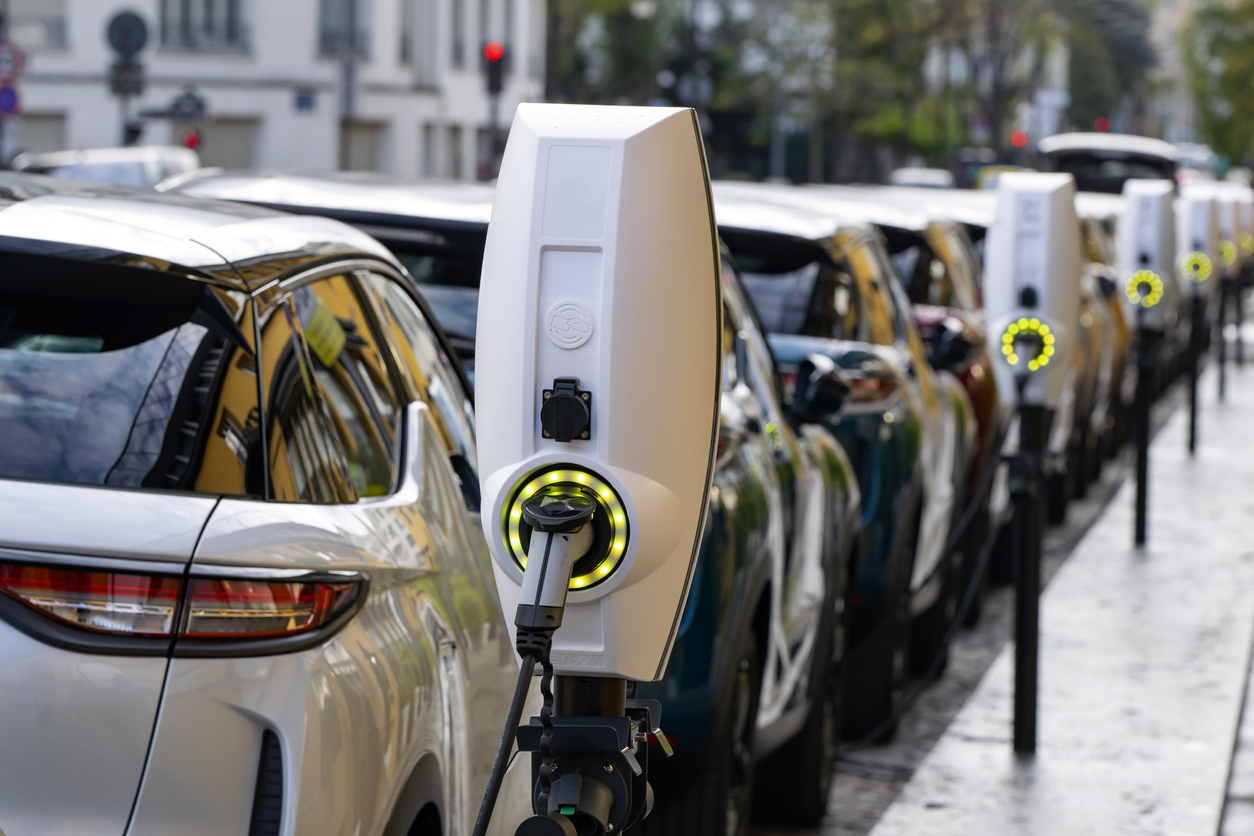A federal sales mandate will make it easier for drivers in all provinces to get behind the wheel of a zero-emissions vehicle.
What’s new
Transportation is the second largest source of carbon emissions in Canada, with almost half of those emissions coming from cars and light-duty trucks. Accelerating the switch from internal combustion engine (ICE) vehicles to zero-emissions vehicles (ZEVs) can therefore go a long way to reducing emissions from the sector.
Unfortunately, drivers looking to get in the ZEV fast lane face a major traffic jam. More than half of Canadians say they want their next car to be a zero-emissions vehicles, but they face long wait times and unequal access across the country—with most of the scarce supply going to provinces with their own sales mandates. This presents a major challenge to reducing emissions from the sector, since consumers will keep buying ICE vehicles if there are no available alternatives.
Our analysis shows that the federal government’s proposed ZEV mandate, which would set minimum sales targets for dealers, can make it easier for drivers across Canada to get behind the wheel of a ZEV.
The ZEV mandate explained
In its 2030 Emissions Reduction Plan (ERP), the federal government committed to developing a ZEV sales mandate, requiring that 100 per cent of all new light-duty vehicles sold in Canada be ZEVs by 2035, with interim targets of 20 per cent by 2026 and 60 per cent by 2030. While ZEV shares of new car sales have risen steadily over the past five years—from one per cent of new vehicle sales in 2017 to seven per cent this year—shares will need to triple in the next four years to meet proposed targets.
A sales mandate can help. British Columbia and Quebec already have mandates, in fact, and it’s no coincidence those are the provinces where it’s easiest for drivers to get their hands on a ZEV.
ZEVs for all provinces and territories
There are many benefits of ZEV mandates, but a major advantage is that they can help get vehicles to the people who want them, sooner.
We analyzed projected ZEV sales in provinces and territories using three different scenarios from the federal government’s 2030 ERP (Figure 1). Only the scenario with legislated, developing, and announced policies (ERP Announced) includes the proposed ZEV mandate.
What we find is that, absent a federal ZEV mandate, significant gaps remain across provinces. British Columbia and Quebec—the only provinces with sales mandates—continue to see much higher ZEV shares, and the majority of national sales continue to go to those provinces. More than half of ZEVs end up in those two provinces in the developing scenario, and almost two-thirds in the legislated one, despite the fact they only account for 37 per cent of the Canadian population.
However, with the federal mandate in place, sales increase significantly in all provinces and territories, and are much more equally distributed across the country—almost 60 per cent of zero-emissions vehicles are projected to be sold outside of B.C. and Quebec in 2030.
Figure 1: A mandate increases ZEV sales across all provinces and territories
Getting more ZEVs into Canada
While a federal ZEV mandate means more equitable distribution across the country, it can also help Canada get ZEV supply in the first place.
Although the global supply of zero-emissions vehicles is growing quickly, auto manufacturers are largely prioritizing jurisdictions with some type of sales mandate. Research shows that jurisdictions with ZEV mandates have much higher shares of ZEV adoption and more model choice than jurisdictions without mandates. We see this in Canada, but it’s also true for global markets.
Internationally, China and Europe are leaders, accounting for over 85 per cent of global ZEV sales last year. China has a ZEV mandate in place and Europe has a voluntary sales target, with plans to pass legislation. The United States follows in a distant third, taking home 10 per cent of global EV sales. While the U.S. does not have a national ZEV mandate, 14 states do. And more than 40 per cent of all ZEVs in the country are registered in California, where a ZEV mandate has been in place for decades.
The list of jurisdictions with ZEV mandates is growing rapidly. The United Kingdom plans to release a ZEV mandate by 2024, and at COP 27, over 40 countries committed to working towards a goal for all new passenger vehicles to be ZEVs by 2040 or earlier. While a federal ZEV mandate cannot solve global supply chain issues, it could help Canada compete for scarce global supply.
Making the switch from ICE vehicles to ZEVs—alongside increasing public transit and active transportation—is key to reducing emissions in the transportation sector and achieving Canada’s climate goals. But it can only happen if drivers across Canada can actually get their hands on an elusive ZEV. A federal ZEV mandate can help get cars into Canada and improve access for drivers in all provinces and territories.
Anna Kanduth was the Director of 440 Megatonnes at the Canadian Climate Institute.
